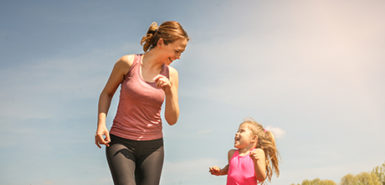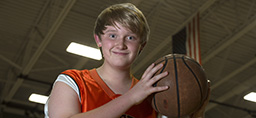
The joy of bicycles is a beautiful thing.
Great exercise, endless games and the freedom to “travel” as a kid.
But before the kids flip up the kickstands for the season, hit the brakes for a minute.
The National Highway Transportation Safety Administration urges everyone to remember that bicycles aren’t toys—they are vehicles, officially—and even experienced riders should do what they can to minimize risk.
And while it might seem about as fun as a flat tire, knowing, understanding, and taking steps to prevent bicycle mishaps now can make a smooth, happy ride for the rest of the summer.
“Bike riding is a great family activity,” said Jennifer Hoekstra, former program coordinator of Spectrum Health Helen DeVos Children’s Hospital Injury Prevention Program and Safe Kids Greater Grand Rapids.
Why wear a helmet?
Consider these facts about bicycles, kids and injuries from the Centers for Disease Control and Prevention and www.helmets.org:
- Helmet use is lowest (for all ages) among children ages 11 to 14.
- Bicycle helmets have been shown to reduce the risk of head injury and the risk of brain injury.
- The Center for Head Injury Services reports that 85% of all head injuries in bicycle accidents can be prevented by wearing a helmet.
- Bicycle helmets have also been shown to offer substantial protection to the forehead and midface.
- Universal use of bicycle helmets by children ages 4 to 15 could prevent between 135 and 155 deaths, between 39,000 and 45,000 head injuries, and between 18,000 and 55,000 scalp and face injuries annually.
- Child helmet ownership and use increases with the parent’s income and education level, yet decreases with the child’s age.
- Children are more likely to wear a bicycle helmet if riding with others who are also wearing one.
- In a national survey of children ages 8 to 12, 53% reported that a parental rule for helmet use would persuade them to wear a helmet, and 49% would wear a helmet if a state or community law required it.
Bicycle helmet use by every rider, of every age, for every ride should be every family’s rule.
Kids may think they look “babyish” or “uncool” with a helmet. Teach them it’s just the opposite.
When possible, let them pick out their own helmet or add flair if it helps them get into it. And if they still hate it? Tell them it’s the rule to ride and stick with it.
When parents ride without helmets, kids are quick to copy. They may wonder why, if it is a big deal, mom and dad aren’t wearing them, too. The moral of the story is everybody should wear a helmet, every ride.
It’s a no brainer
Correct fit and proper positioning are essential to the effectiveness of bike helmets at reducing injury.
One study found that children whose helmets fit poorly are at twice the risk of head injury in a crash compared to children whose helmet fit is excellent. In addition, children who wear their helmets tipped back on their heads have a 52% greater risk of head injury than those who wear their helmets centered on their heads.
“Remember, it can only protect their head if they wear it correctly each and every time they ride,” Hoekstra added.
 /a>
/a>
 /a>
/a>
 /a>
/a>
Just wondering is there any place out there parents that can’t afford a helmet can get a free one or discounted?
Parents can set up an appointment at our office and purchase a seat for a discounted price. The beauty is that we’ll fit it to the child and make sure it’s the perfect addition to their safe summer! Call 391.7233 or email injuryprevention@helendevoschildrens.org